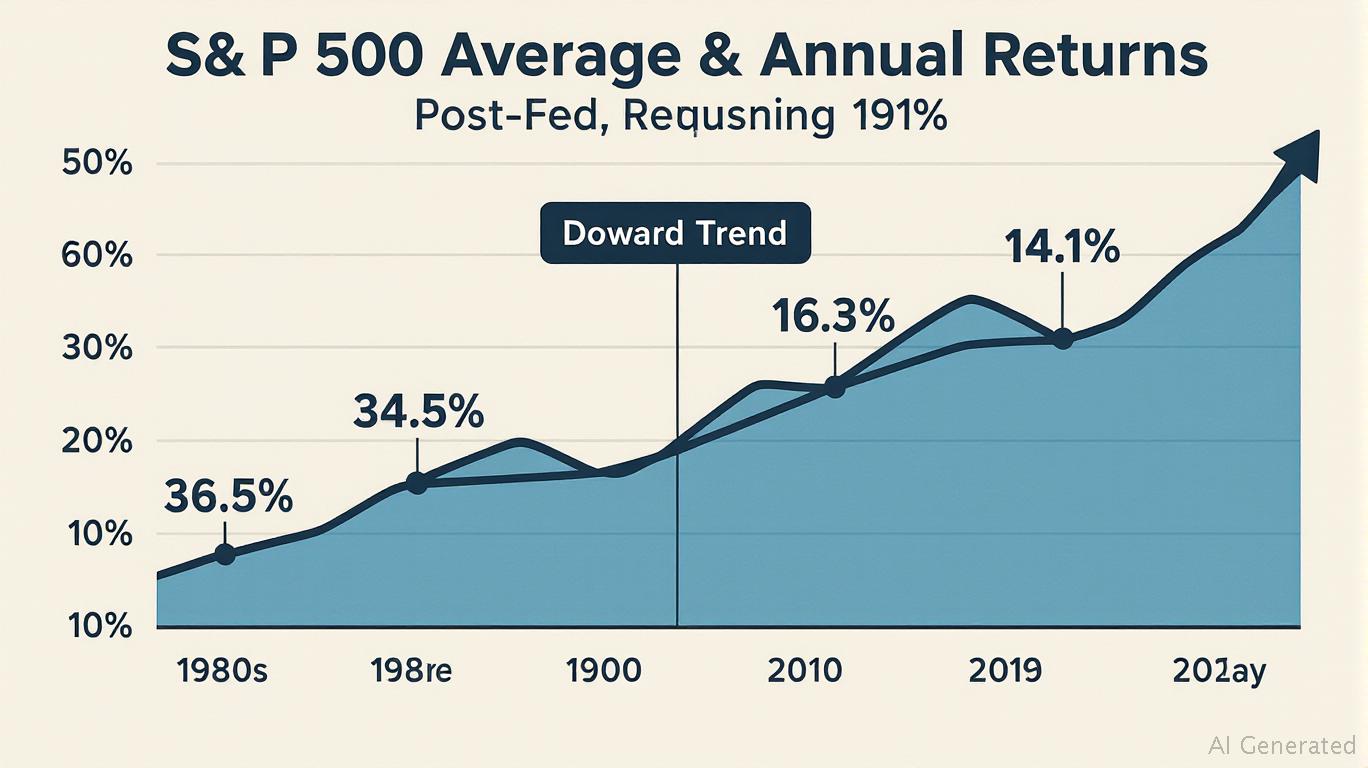The Federal Reserve has long been the market’s savior in times of economic stress, using rate cuts to spark rallies and calm fears. But over the past four decades, the punch of these cuts has steadily weakened. Today, the S&P 500’s average 12-month return following rate cuts—once a reliable 14.1%—is being overshadowed by structural headwinds, from towering corporate debt to the Fed’s eroded policy flexibility.
The Golden Age of Rate Cuts (1980s–1990s): When Cuts Truly Sparked Rallies
In the 1980s, the Fed’s aggressive easing could ignite explosive gains. The 1982 rate-cut cycle, for example, saw the S&P 500 surge 36.5% in 12 months as the economy emerged from a Volcker-induced recession. By the 1990s, the Fed’s “Greenspan put” ensured that cuts like those in 1998—made to cushion the LTCM crisis—delivered a 27.3% jump in the S&P 500 over the following year. Back then, lower rates directly fueled borrowing, spending, and equity valuations.
But the playbook has faltered.  .
.
Why Rate Cuts Are Losing Their Juice1. Debt Overhang: The Fed Can’t Offset Balance-Sheet Risks
Corporate debt has ballooned since the 1980s. Non-financial U.S. corporate debt-to-GDP hit 80% in 2023, nearly double its 1980 level. When the Fed cuts rates now, it doesn’t just boost borrowing—it also exposes overleveraged companies to refinancing risks. In 2024, even as rates fell, sectors like real estate and industrials (highly sensitive to borrowing costs) lagged the S&P 500.
Apple’s steady growth vs. Caterpillar’s volatility highlights the shift toward quality over cyclical bets.
2. Valuations Are Already Stretched
Equity valuations no longer respond as eagerly to rate cuts. The S&P 500’s forward P/E ratio averaged 14.6x in the 1980s. Today, it’s 18.2x, with much of the lift coming from Fed-induced liquidity rather than earnings growth. In the 2001 and 2007 cycles, the market’s P/E peaked before the Fed even acted, leaving little room for further expansion.
3. The Fed’s Forward Guidance Has Lost Its Edge
Investors now price in rate cuts long before they happen. In 2024, the S&P 500 rose 3% in the three months before the Fed’s September cut—only to drop 1.5% the day of the announcement. Markets are no longer surprised; they’re skeptical.
Current Dynamics: The Fed’s 2024 Cuts Are No Panacea
The Fed’s recent cuts, starting from 5.25% in September 2024, face a harsher reality:
– Slower Growth: GDP is stuck at 1.5%, down from the 3% “soft landing” hopes.
– Debt Constraints: Over $20 trillion in U.S. corporate debt matures by 2027, making rate cuts a double-edged sword. Lower rates help borrowers but hurt banks’ net interest margins.
– Policy Limits: The Fed’s credibility is fraying. Inflation remains stubbornly above 2%, and equity markets are pricing in a 45% chance of recession by mid-2025.
Actionable Investment Strategies
The era of reflexive “buy the Fed’s cuts” is over. Here’s how to navigate this new reality:
Underweight Rate-Sensitive SectorsFinancials: Banks and insurers benefit less from rate cuts today, as their profit margins are squeezed by flat yields. Cyclicals: Industrials and materials face demand headwinds as global growth stalls. Embrace Quality and Defensive PlaysTech Giants: Companies like Microsoft (MSFT) and Alphabet (GOOGL) with strong balance sheets and recurring revenue streams have outperformed in every post-2000 rate-cut cycle. Utilities and Healthcare: These sectors are less tied to the Fed’s whims and offer stable dividends. Hedge Against Volatility
The historical pattern of elevated volatility before and after rate cuts remains intact. In 2024, the VIX spiked to 22.5% ahead of the September cut—a level last seen in 2020. Use options or inverse ETFs (e.g., S&P 500 Put Options) to protect gains.
Conclusion: The Fed’s Toolkit Is Empty. Time to Adapt.
The Fed’s ability to goose markets has faded, and investors must accept that rate cuts are no longer a cure-all. The path forward favors companies with durable cash flows and low debt, while cyclicals and speculative bets face rising risks. As the Fed’s influence wanes, the market’s focus is shifting from central bank wizardry to fundamentals—a trend that will define investing for years to come.
Volatility remains a constant, even as rate cuts lose their power.